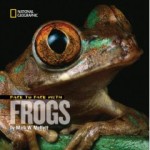Like sea turtles and birds, dolphins and other marine mammals are extremely vulnerable to the effects of oil. There are 35,000 to 45,000 bottlenose dolphins in the Gulf of Mexico, one of the largest populations of dolphins off the coast of the U.S.
Unlike fish, dolphins need to come to the surface frequently to breathe. When they surface, they may come in contact with the oil slick that now covers thousands of square miles of the Gulf of Mexico.
Dolphins are smooth-skinned, hairless mammals with extremely sensitive skin—even more sensitive than human skin. Oil can cause chemical burns or skin irritation.
Dolphins may inhale oil and oil vapor. This may lead to damage of the airways, lung ailments, mucous membrane damage, or even death.
Oil may damage a dolphin’s eyes, which can cause ulcers, conjunctivitis, and blindness, making it difficult for them to find food, and sometimes causing starvation.
Ingesting oil can cause ulcers or internal bleeding.
Oil can impair a dolphin’s immune system and may cause secondary fungal or bacterial infections.
Oil may move up through the food chain as dolphins eat contaminated prey. Dolphins feed on fish and squid and spend much of their time in waters close to shore.
Dolphin calves may be poisoned as they can absorb oil through their mothers’ milk
Dolphins may experience stress and behavioral changes due to oil exposure.
Marine mammals are our closest relatives in the ocean—it’s heartbreaking that we have fouled their habitats and are potentially poisoning large numbers of these beautiful and intelligent animals. You can help by donating to The Institute for Marine Mammal Studies, Gulfpost, MS
Most of this information in this post is from Effects of Maritime Oil Spills on Wildlife, on the Australian government website






Pingback: THE CORPORATION [5/23] Case Histories | Health,health report,health information
Thanks for sharing this. It took me a few days to work up the nerve to read it. Injured or harmed animals always breaks my heart!
That some dolphins cannot evade oil is not a measurement of their intelligence. Imagine yourselves trying to avoid patches of toxic air spread around your city. Even though they are air-breathing mammals, the water envelopes their bodies as air envelopes ours. It should be noted in addition that they are not very good “sprinters” and tire quickly.
Pingback: The Nine Animals BP’s Oil Is Killing First | The Animal Journal
I’m on overload….. This is horrific.
With all the money and resources, why don’t companies like BP PLAN AHEAD. The people aren’t being used for clean-up because of the chemical dispersements BP used. God only knows how that impacts the marine life. Instead of one big slick they have thousands. Who authorized those idiots to use the dispersements anyway. Did the administration approve this?
Dear Sir/Madam,
I am a Grade 6 student at One World International School in Singapore. I am currently researching for my Exhibition and I am studying water pollution and its effects on sea life and fishermen. Would you be able to help me with my research? I would greatly appreciate any information that you could provide.
Yours sincerely,
Purinat